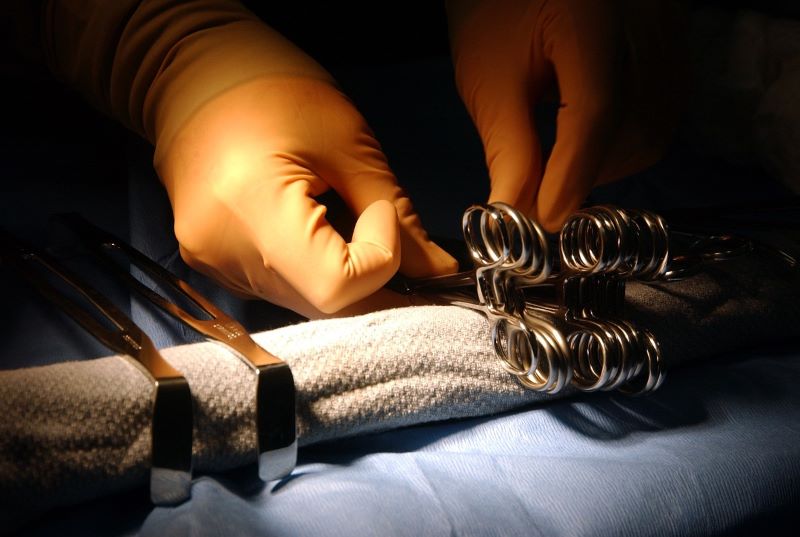
Ethylene oxide sterilization is a broadly used method within the industrial and healthcare industries for sterilizing a wide range of products.
However, its potential environmental and health effects have raised concerns among advocacy groups and government agencies.
In this article, Tony Eisenhut, CEO of NovaSterilis, stresses the importance of finding better alternatives to EtO sterilization. He takes us through the different options that are currently available.
Ethylene Oxide Sterilization: Health and Environmental Concerns
EtO is a colorless gas that manufacturers use to sterilize medical devices and equipment unsuitable for conventional sterilization methods such as heat, steam, and gamma.
According to the Food and Drug Administration, approximately 50% of medical devices (20 million) undergo EtO treatment yearly.
“Ethylene oxide sterilization has been the “workhorse” of the industrial sterilization market for well over 50 years.”, says Tony, CEO of NovaSterilis.
When EtO is released into the air, it can cause harmful health problems for people and land animals. As a result, the US Environmental Protection Agency (EPA) proposed new rules to cut down EtO emissions by 80% per year.
“EtO is recognized by the EPA and other similar agencies globally as a carcinogen that requires containment to minimize exposure to communities near EtO facilities. There are extensive process controls to monitor processed medical devices so that residual EtO is at allowable levels, and there are facility controls that monitor and regulate EtO emissions from processing facilities.”, Tony explains.
Addressing Challenges in EtO Sterilization
As Tony noted, new Ethylene oxide sterilization restrictions present potential challenges for the healthcare industry. Some of these challenges include:
- Supply chain problems – companies relying on EtO for sterilization may have trouble obtaining sufficient supply.
- Financial implications – the increased costs of meeting stricter regulations may make EtO less economically viable.
- Litigation exposure – the health risks associated with EtO put companies at risk of lawsuits.
Furthermore, the increasing demand for medical devices and high-quality medical services, driven by the aging population, will compel companies to explore alternative options, he explains.
“The healthcare industry will methodically move to EtO alternatives as new products are brought to market. Alternative sterilization modalities will become more broadly utilized because of government-initiated collaborations between federal agencies, sterilization providers, medical device and pharmaceutical companies, and healthcare providers. Fear of impending government regulation and active litigation is forcing companies to explore and invest in alternatives to EtO. Incentives and regulatory partnerships are already helping to accelerate regulatory clearances for products using alternate sterilization solutions. Although the transition from ethylene oxide sterilization to alternative modalities will seem slow to some, it will be significantly accelerated when compared to the historical rate of transition to new sterilization modalities. Safety will continue to be a primary concern of both companies and regulatory agencies to ensure sterility and functionality are not compromised.”, says Tony.

Beyond EtO: Exploring Alternative Sterilization Solutions
In 2019, the FDA launched a public challenge to encourage the development of novel approaches to medical device sterilization. The primary focus of Challenge 1 was identifying viable alternatives to ethylene oxide sterilization methods.
The agency received 24 applications from companies of various sizes and selected the following submissions:
- Supercritical CO2 (scCO2) technology from NovaSterilis – scCO2 is a fluid state of CO2 held above its critical temperature and pressure. It’s non-toxic and generally safe for the environment.
- Nitrogen dioxide – it’s a low-temperature method that has demonstrated effectiveness against numerous microorganisms.
- Accelerator-Based Radiation – employs e-beam and x-ray irradiation techniques, ensuring that no chemical residues are left behind on medical devices.
- Vaporized hydrogen peroxide – VHP is a stabilized, high-purity, aqueous hydrogen peroxide solution. In this method, liquid H2O2 is converted into vapor, which fills the chamber and effectively sterilizes the device.
- Vaporized Hydrogen Peroxide-ozone – it uses VHP as the primary sterilant. Then, O3 is added to the sterilization chamber to reduce residual H2O2.
According to Tony, each sterilization solution has a unique attribute that makes it more appropriate for a particular material or device configuration. For example, scCO2 is not only low temperature and minimally reactive, but it also has the most effective penetration capability compared to the other modalities.
“Today’s products require more nuanced sterilization solutions, so multiple modalities will ultimately be needed to meet the full breadth of products being brought to market. These technologies each possess some of the beneficial attributes of EtO without environmental or workplace safety issues.,” Tony says.
But Tony points out that companies should proceed cautiously when evaluating and selecting alternative sterilization methods. “Evaluating material compatibility with the sterilization modality early in the product development cycle is extremely important. Research and development teams need to make sterilization a defined priority in their list of aims and objectives. Aseptic manufacturing is highly limiting, given the cost burden it places on the commercial viability of a product/treatment.”
Emerging Trends in Sterilization Methods
Despite the headwinds, Tony remains optimistic about the future of sterilization.
“Sterilization will evolve at a greater rate than the industry has ever experienced. Increased demand will drive investment in innovation. The economic crisis facing the healthcare industry will force cost reductions, which will be met through innovation. These innovative products will need to be sterile and terminal sterilization is the most cost-effective solution.”, Tony says.
“This demand will move from the traditional medical device and small molecule therapeutic industries to the regenerative medicine and biotherapeutic industries. NovaSterilis expects its scCO2 sterilization solution to see continued interest because of its compatibility profile with biologics. In addition, there will be growth in the sterilization industry as manufacturers deliver on the requirements to transition from Ethylene oxide sterilization to safer alternatives.”, he adds.
Interested in learning more about scCO2 sterilization technology? Schedule a consultation now.

